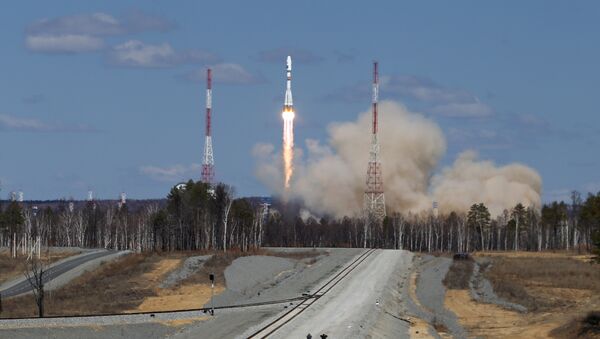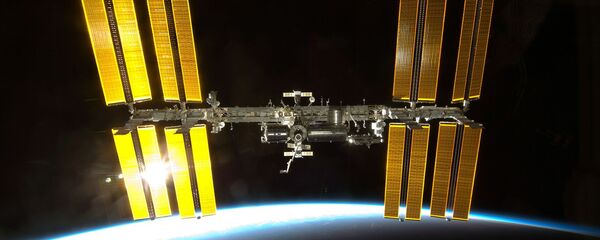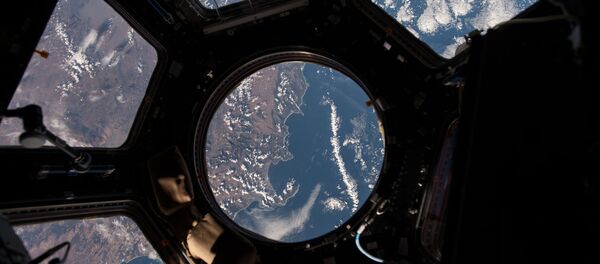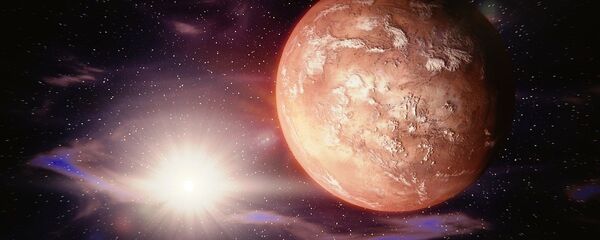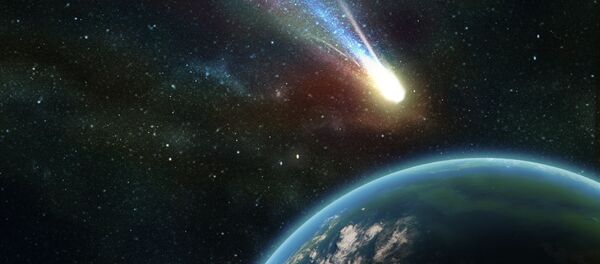Vostochny Cosmodrome
On April 28, Russia carried out a maiden space launch from the Vostochny cosmodrome in the Far Eastern Amur region that had been under construction since 2012.
The first launch was scheduled for April 27 but was postponed for a day due to the minor failure of the rocket's automatic control system. The Soyuz rocket lifted off carrying the Mikhailo Lomonosov research satellite, tasked with studying the cosmic rays of extremely high energy, space gamma-bursts as well as magnetospheric particles reaching the earth from distant galaxies, as well as two smaller secondary payloads.
Even before the first launch took place, Russia had spent 84 billion rubles ($1.3 billion) on the construction of the Vostochny, but a great deal of work is yet to be done to make the cosmodrome suitable to launch manned missions to space.
The newly-built space center will eventually have three launch pads, including one for super-heavy class space rockets and one for the Angara rocket family. The first manned flight from Vostochny is slated for 2023, when the new Federatsiya space shuttle will be placed in orbit by the Angara-A5V heavy-lift rocket.
Besides, Russia continues construction of a nearby town of Tsiolkovsky to accommodate the cosmodrome personnel and those working at the related facilities while the center's cosmonaut training complex will be completed by 2022.
New federal space program
In March, the Russian government approved the country's new Federal Space Program until 2025 with a budget amounting to some $20.5 billion.
Under the program, Russia is planning to orbit 44 satellites by 2025 and is ready to pay for it $1.3 billion. It will increase the constellation of the Russian spacecraft to 73 in 2025.
Besides, Russia plans to launch the development of a super-heavy carrier rocket that will eventually cost some $23 billion. The new carrier rocket will allow Russia to launch a manned spaceflight to explore the deep space.
According to the program, at least three launches of the abovementioned next-generation reusable spacecraft to replace the Soyuz family, called Federatsiya, will be carried out until 2025. The spacecraft is due to be launched in unmanned mode in 2021, with a manned launch to the International Space Station (ISS) planned by 2023, according to the document.
Regarding the future of ISS, Russia intends to equip the Russian segment of the station with modules necessary to ensure its autonomous flight after 2024, which could allow transforming it into an independent Russian space station.
Special attention in the document is paid to the lunar program. Russia intends to launch at least five spacecraft for in-depth studies of the Moon, including implementation of the Luna-Grunt (Lunar Sample-Return) project aimed at delivering lunar soil to the Earth.
In 2017, the financing of Russia's federal space program will reach some 92.5 billion rubles ($1.47 billion).
Chinese long march to stars
The major space exploration breakthrough of 2016 was made by China.
On June 25, Long March 7, the Chinese newest booster capable of lifting up to 13.5 metric tons of payload, launched successfully with a test model of a next-generation manned spacecraft and several satellites.
The start was the first one carried out from the new Wenchang Satellite Launch Center, located on Hainan Island, China's southernmost point close to the Earth’s equator which reduces the amount of propellants required for a satellite's maneuver from transit orbit to geostationary orbit.
In November, China managed to build on this success launching the Long March 5 next-generation carrier rocket capable of lifting up to 25 tons. The rocket is expected to carry the lunar probe in 2017 and launch both Mars probes and Beijing's space station modules.
In between this two launches, on September 15 China orbited the Tiangong 2 (Heavenly Palace) space laboratory used to test key technology and conduct medical and space experiments ahead of the launch of Tiangong 3 planned to become the key element of the Chinese large modular space station in 2023.
A month later, China launched two men into space from the Jiuquan Satellite Launch Centre in northern China using the Shenzhou 11 spacecraft. They spent 30 days at the station, the longest stay by Chinese astronauts.
Falcon lands, Antares returns
The US space industry in 2016 experienced both major successes and a loss. In April, the first stage of a Space X Falcon 9 rocket that launched with cargo resupply mission reentered atmosphere and landed on the ocean landing platform, an important milestone for the company seeking to reuse its rockets to cut costs of the launches.
Unfortunately, on September 1, a SpaceX Falcon 9 rocket exploded during the launch at the Cape Canaveral Air Force Station in Florida. The rocket turned into a fireball due to "a large breach in the cryogenic helium system of the second stage liquid oxygen tank," according to the company.
Although there were no injuries in the accident, a $200-million Space Communication Ltd satellite was lost.
Besides, on October 17, the US Antares carrier rocket equipped with two Russian RD-181 engines blasted off to the ISS with the Cygnus cargo ship. It was the first launch since October 2014, when the rocket exploded seconds after take-off at the Wallops Flight Facility located on the Atlantic coast of the US state of Virginia.
Exo-Mars
This year Russia and the European Union launched the first in history joint mission to Mars.
The European Space Agency (ESA) and Roscosmos agreed to develop the ExoMars program aimed to investigate the atmosphere of the Red Planet and explore potential signs of life back in 2012.
The ExoMars's spacecrafts — the orbital and the landing modules — were put into orbit by the Russian Proton-M space rocket in March.
On October 16, the spacecraft reached the Red Planet's orbit. The Schiaparelli lander successfully separated from ExoMars Trace Gas Orbiter (TGO), however, the signal from the robotic probe of Mars went dark shortly before the vessel landed on the planet’s surface. Later, ESA confirmed that the lander crashed, possibly, due to Inertial Measurement Unit (IMU) mistake.
However, this failure did not put an end to the cooperation between Roscosmos and ESA. In September, Rene Pischel, the head of the ESA's permanent mission in Russia, told Sputnik that ESA plans to cooperate with Russia’s Roscosmos on lunar research.
Besides, the sides stick to the plan to carry out the second mission of the historic EU-Russia project — putting a rover on Mars that will perform a drill dedicated to exobiology and geochemistry research. However, the launch has already been postponed by two years until 2020, Roscosmos said in May.
Planets, comets, asteroids
In May 2016, Akatsuki, Japan’s first Venus probe launched in 2010, started its observations of the planet after entering its orbit in late 2015. Though Venus is similar to Earth in size and gravity, it is covered with a dense layer of sulfuric acid clouds, making it almost impossible to see the planet's surface in visible light. To that end, Akatsuki is equipped with an ultraviolet imager and a longwave infrared camera. One of the mission's main objectives is to gain insight into the so-called super-rotation of the Venus' upper atmospheric layers, which results in severe storms raging with the speed of some 180 miles per hour.
In September, NASA’s OSIRIS-Rex spacecraft was launched aboard an Atlas V 411 rocket from Cape Canaveral for Bennu, an asteroid that could be on track to collide with the Earth in the next century. After a two-year trip to 101955 Bennu, Osiris will be observing the asteroid for another two years and then will retrieve a sample that could provide some insight into the early days of the Solar System before returning home.
Besides, on September 30, ESA’s Rosetta spacecraft ended its historic mission, crashing into the surface of the comet 67P/Churyumov-Gerasimenko it has been investigating for almost two years. The 12-year mission (Rosetta was launched on March 2, 2004, but reached the comet only in August 2014) is the first time a spacecraft has examined a speeding comet so close. Among other findings, Rosetta discovered phosphorus in the comet, the chemical element that is a key component of DNA, which enabled scientists to confirm that the Solar System’s primal matter had all the components crucial for the origin of life.
Space Odyssey 2017
The year of 2017 will see the second launch from the Vostochny space center. The Soyuz-2.1a carrier will orbit a pair of Kanopus-V remote sensing satellites designed for real-time monitoring of natural disasters and other emergency situations in the second half of the year.
In September 2017, Russian scientists will launch the SPEKTR-RG, a pair of x-ray telescopes for studying black holes and neutron stars manufactured in cooperation with the European colleagues.
Some spacecraft will start their extraterrestrial life while others will end it after accomplishing their missions. In September 2017, NASA’s veteran Cassini spacecraft sent to the planet Saturn will finish its work. Initially developed in the 1980s and launched in 1997, Cassini reached its orbit near Saturn 12 years ago, in 2004. It has travelled over 2 billion miles before launching the Titan lander Huygens in 2005. Now it is running out of fuel and will soon go silent.
Among other key events for the industry in 2017, the first orbital flight of the SpaceX Dragon 2 capsules in July and Boeing CST-100 Starliner capsules to the ISS in December 2017 will take place.
While the US companies are carrying out unmanned tests of their spacecraft, Russia’s Soyuz vehicles will continue the delivery of the crews to the International Space Station throughout the year. In 2016, Russia sent four mixed crews to the ISS. Another four missions, including four Russian cosmonauts, four NASA astronauts, as well as an Italian and a Japanese astronauts will be launched by Roscosmos in 2017.

